Want to wage war on fat and show off your shredded six-pack this summer? Don't fall victim to the usual crappy advice that says getting cut takes endless runs, salads, and sit-ups. Unless you want to be skinny-ripped, that kind of training won't get you the head-turning aesthetics you're looking for.
Instead of dieting yourself to death or running for miles in the heat, arm yourself with these six basic principles of getting lean. They're easy to implement and provide concrete advice that you can follow no matter what level you're at right now.
1INCORPORATE RESISTANCE TRAINING INTO YOUR LIFESTYLE
First and foremost, you need to understand this: The more muscle you have on your body, the more metabolically active your body becomes. Because it has more muscle, your body will burn more calories per day—even when you're just sitting around!
Sounds awesome, right? However, the only way to build more muscle is to incorporate hard resistance training (lifting weights) into your exercise regimen. Stressing your body by lifting weights will make your muscles realize they need to be bigger and stronger. It takes a lot of energy to grow and maintain muscle mass.
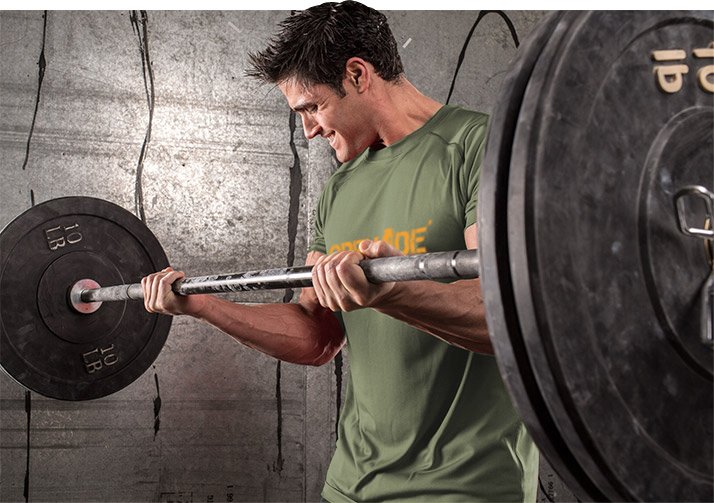
Your body will use more calories as it grows more muscle, but you can also take into account the energy (calories) you're expending while you're working out andthe energy your muscles use to repair themselves after you're done. When you put it all together, you can see why resistance training is number one on this list.
In reality, you don't even have to cut calories to see some crazy aesthetic benefits from resistance training.
2INCREASE YOUR FIBER INTAKE
Fiber is a type of carbohydrate the body can't break down into glucose to use for energy. There are two types of fiber: soluble and insoluble. Both are beneficial in different ways. Soluble fiber attracts water to form a gel which slows down digestion and delays the emptying of your stomach, helping to keep you fuller longer. Additionally, it can lower blood cholesterol by interfering with the absorption of dietary cholesterol, helping to remove it from the body.
Insoluble fiber is said to promote regular bowel movements and can help food pass more quickly through the stomach and intestines, contributing to healthy digestive function.
Fiber also slows the release of carbohydrates. Black beans, berries, sweet potatoes, and other high-fiber foods are digested at a much slower rate, causing a slow, steady stream of glucose into your blood stream. On the other hand, low-fiber foods like white bread will digest much faster, causing larger spikes in insulin.
If I haven't yet convinced you to eat more fiber, here's the real kicker: satiety. High-fiber foods like broccoli will fill you up and make you feel satisfied longer, even when you eat less volume. One cup of broccoli yields about 40 calories with 10 grams of carbs, 4 of which are "unabsorbable" fiber.
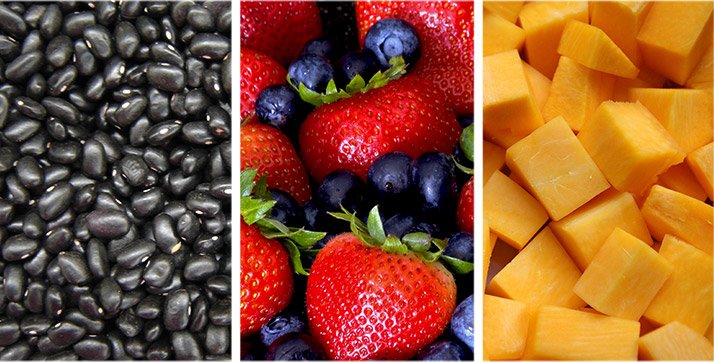
Compare that broccoli to one cup of pasta that yields around 150 calories with 45 grams of carbs. You'd be able to blow through that cup of pasta like it was nothing, and probably go back for seconds and thirds, but that single cup of broccoli may be filling enough that you feel great for hours.
3KNOW THAT NOT ALL CALORIES ARE CREATED EQUAL
The foods we eat are just as important as the calories they supply. Simply put, everything you eat can be categorized as either a carbohydrate, fat, or protein. Each of these three macronutrients will metabolize differently, even though they all provide calories. One gram of protein provides 4 calories, one gram of carbs provides 4 calories, and one gram of fat provides 9 calories.
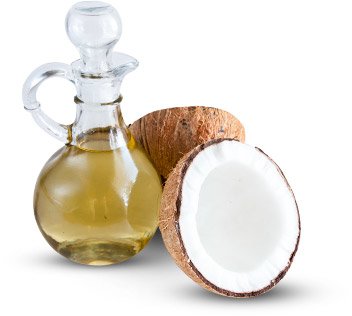
If your diet consists of cake and ice cream, for example, you'll look and feel differently than if your diet consists of lean meat and vegetables. Protein has a higher thermic effect than carbohydrates and fats. This means your body burns more calories breaking down and digesting protein than it does carbs and fats. Additionally, protein has been shown to increase satiety to a greater degree than carbohydrates.
Although protein is an important part of a healthy diet, you certainly shouldn't derive all of your calories from that one macronutrient. Carbohydrates and fats are essential for a healthy body as well. Certain fats, such as medium-chain fatty acids like coconut oil, are actually linked to increased energy expenditure and reduced hunger when included in the diet.
Carbohydrates are your body's preferred energy source and are necessary for maintaining oomph as you train. However, carbohydrates also fill up your body's glycogen stores quickly, so excess carbs in your diet can also mean excess fat.
Each person's body works a little differently. It's in your best interest to experiment with different types and amounts of calories to see what works and feels best.
4COMBINE MACRONUTRIENTS WISELY
Remember what I said about cake and ice cream? If you're trying to get lean, it's probably not wise to consume a carb-only meal. A meal like this can cause the liver to convert excess carbohydrates into fat, which will be stored for future use as energy. Not only will this likely lead to increases in stored body fat, but you're missing out on satiating effects of protein—increasing the chances you'll be reaching for a Snickers to keep you satisfied between meals.
A good rule of thumb is to make sure you have protein in every meal and to time your meals to create specific hormonal responses. Combine carbs with protein to create an insulin spike post-workout. This is when the body is primed to use these carbs and protein for an anabolic (muscle-building) effect.
You can also combine fats with proteins to provide energy with a much smaller insulin response. Because you're not supplying your body with carbohydrates in this meal, your body will turn to fat as its main energy source. In addition, fat can slow down the digestion of protein for a more sustained release of amino acids.
5DON'T DO EXCESSIVE CARDIO
As with resistance training, your body will adapt to cardio. If you run for hours, your body will eventually adapt by becoming very fuel-efficient. By that I mean it will learn to burn the fewest amount of calories possible in an attempt to run farther and longer using less energy. Eventually, your body will get so good at burning fuel that you'll have to do a lot more cardio to achieve the same fat-burning effect.
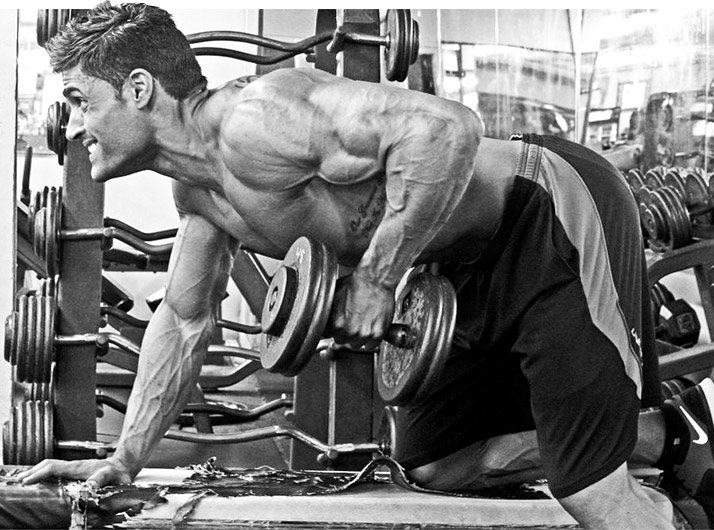
If you're already in the habit of running for hours multiple times per week, you're going to have to cut way back. The only way to get your metabolism back to a baseline is to feed your body more food and cut out cardio. Once your metabolism is in check, you can manipulate foods to help you lose weight and implement an effective training schedule that will add muscle to your body.
6TRACK AND RECORD EVERYTHING!
This is probably the most important tip for getting and staying lean. You must track your progress, measure your body fat and weight, and weigh out and record all food portions you consume to know what will work for your body.
Each person is different—no cookie-cutter diet works for everyone. There are general rules of thumb to abide by, but to use someone else's meal plan to achieve results will most likely leave you disappointed.
I know it sounds too simplistic, but the only real way to figure out what will work for you is trial and error. However, there are a couple things you can do to make the process easier. Number one, figure out your total daily energy expenditure (TDEE).
CALCULATE YOUR TOTAL DAILY ENERGY EXPENDITURE!
MIFFLIN ST. JEOR EQUATION
Men: 10 x weight (kg) + 6.25 x height (cm) - 5 x age (y) + 5
Women: 10 x weight (kg) + 6.25 x height (cm) - 5 x age (y) - 161
* Moderately active (moderate exercise/sports 3-5 days/week): BMR x 1.55
CALORIE CALCULATOR
* Mifflin-St. Jeor Equation
Once you've figured out how many calories you need, track and record what you eat to see how close you are to that specific caloric intake. Once you have controlled your caloric intake, you can start to break those calories down into macronutrient ratios.
The rule of thumb is to start off with a 40/40/20 diet, meaning 40 percent of your calories come from carbs, 40 percent from protein, and 20 percent from fat. For example: if your caloric intake is 3000 calories, then 1200 calories (or 40 percent) should come from carbs, 1200 calories (40 percent) should come from protein, and 600 calories (or 20 percent) should come from fats.
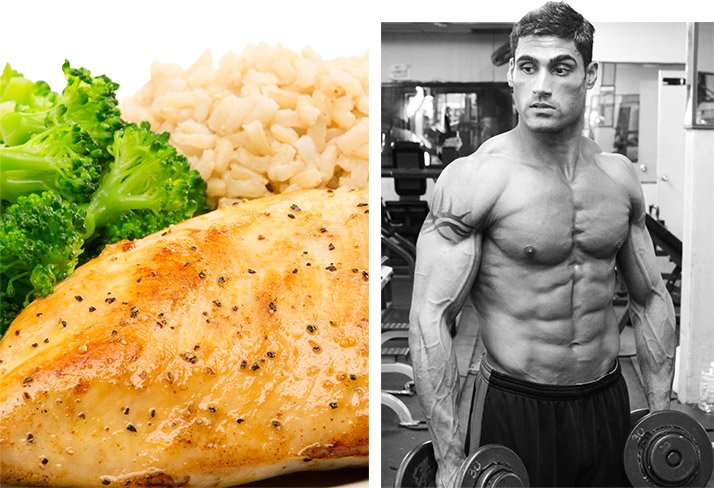
To figure out how many grams you need to eat of each macronutrient per day, divide the specific macronutrient calorie number by how many calories it provides per gram. For example, carbs provide 4 calories per gram, so divide 1200 by 4 and you get 300 grams of carbs per day. By reading food labels or using fitness apps to track your consumption, you will be able to reach that 300 grams of carbs per day with ease.
Once you've established your meal plan, give your body some time on this initial caloric intake to see how it responds. If your weight remains unchanged and you look the same in your progress pictures, you know your calorie intake and macronutrient ratio match what your body needs to stay the same. If you start gaining weight too quickly, you know those numbers may have been set a little too high. If you start losing weight too quickly, or feel your muscle mass and strength decreasing, you need more calories.
Manipulate your macronutrients and/or caloric intake depending on how you want to look. To get lean, you may want to remove some carbohydrates from your diet or add a little more cardio. Learning how your body adjusts to these manipulations takes time and can be frustrating because numbers can get confusing. Don't stress over screw-ups. Change one variable at a time. If you lower your carb intake by 15 percent and notice good progress, you made the right decision. If it doesn't work, readjust.
Initially, I suggest that you stick to the foods you know are "clean," like chicken breast, broccoli, and brown rice. But once you're able to see how your body responds to different foods, you can start adding in the foods you really enjoy—like a ham, bacon, egg, and cheese sandwich on a poppy seed bagel!
That's the thing—leaning out isn't about pain and deprivation. It's about arming yourself with an arsenal of knowledge and taking control of your body. Now, go get them cuts!
SHARE BY: Bodybuilding
Let's sport, and fat out !!

